Pleyel, Ignaz: Sinfonia Concertante in A (Benton 114) Adapted for violin and pianoforte (AE458) – sheet music
Previous Product Next Product
Description |
Pleyel, Ignaz (1757-1831)
|
||||||||||||||||||||
Details |
Description: Ignaz Pleyel (1757-1831) was at one time the most famous composer in the world. The popularity of his music eclipsed that of even his teacher Haydn and publishers vied to bring out his latest works as soon as they were finished. Some 2000 separate prints of Pleyel works had appeared by 1800 and his fame extended to every corner of Europe and as far afield as North America. Pleyel's career as a composer spanned less than thirty years with the majority of his works composed in the 1780s. He founded a successful publishing house in Paris in the mid-1790s and later began manufacturing keyboard instruments. With increasing demands on his time from his business concerns Pleyel's productivity as a composer dropped sharply and he ceased composing around 1805. The Sinfonia Concertante in A for 2 Violins was composed in 1792 and, like the 'celebrated' Concertante in F (Benton 113), received its premiere in London at one of the Professional Concerts. The work was very well received and appeared quickly in several editions including several from Pleyel himself. The present duo version for pianoforte and violin is probably not by Pleyel. The adaptation is cleverly done and may hint at an authorial hand. The distribution of the solo material is surprisingly subtle. Neither of the solo parts is given over exclusively to the right hand of the piano. Often the roles are reversed from the original and the solo parts, when assigned to the piano, are skillfully adapted to a more pianistic idiom. In a number of passages both parts are altered even when, strictly speaking, it is not necessary from an idiomatic perspective. These alterations, if not the consequence of working from a corrupt text, may represent a simplification of the work for domestic performance. Pleyel's delicate orchestral accompaniments adapt well for keyboard performance and the tutti sections at times make effective use of both instruments in their simulation of the full orchestral texture. |




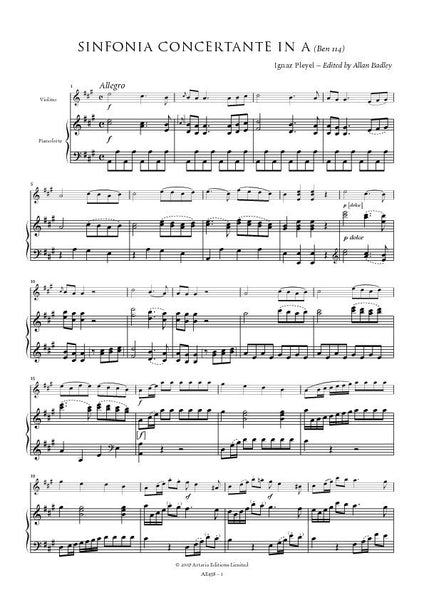
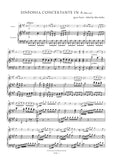
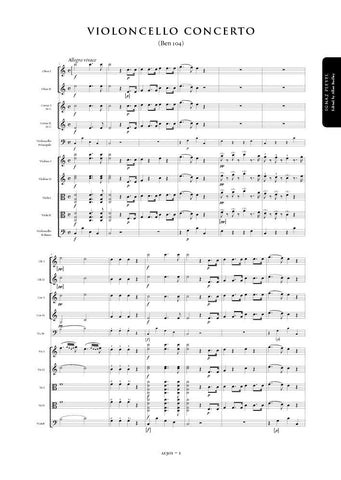

![Pleyel, Ignaz: Cello Concerto in C major (Benton 104) [Study Edition] (AE301/SE)](http://www.artaria.com/cdn/shop/products/AE301_SE_Score_1stpage_1_large.jpg?v=1571438516)
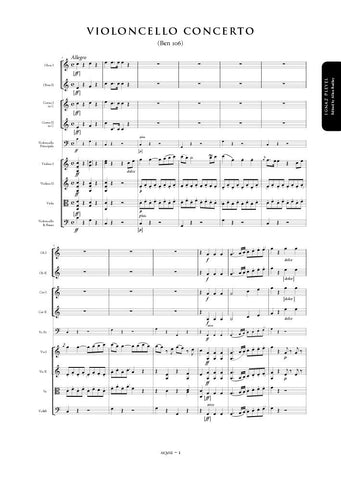
![Pleyel, Ignaz: Cello Concerto in C major (Benton 106) [Study Edition] (AE302/SE)](http://www.artaria.com/cdn/shop/products/AE302_SE_Score_1stpage_1_large.jpg?v=1571438516)
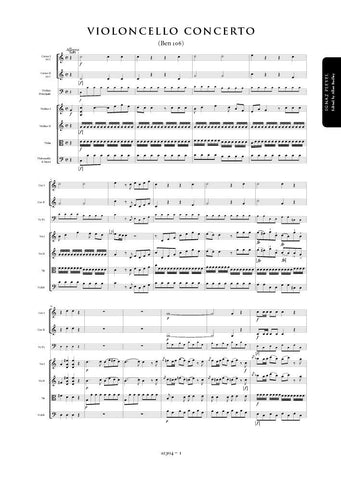
![Pleyel, Ignaz: Cello Concerto in C major (Benton 108) [Study Edition] (AE304/SE)](http://www.artaria.com/cdn/shop/products/AE304_SE_Score_1stpage_1_large.jpg?v=1571438515)
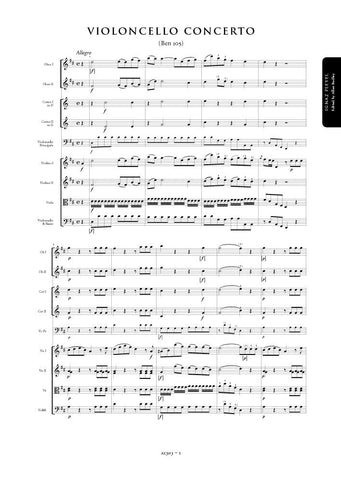
![Pleyel, Ignaz: Cello Concerto in D major (Benton 105) [Study Edition] (AE303/SE)](http://www.artaria.com/cdn/shop/products/AE303_SE_Score_A4_1_large.jpg?v=1571438516)